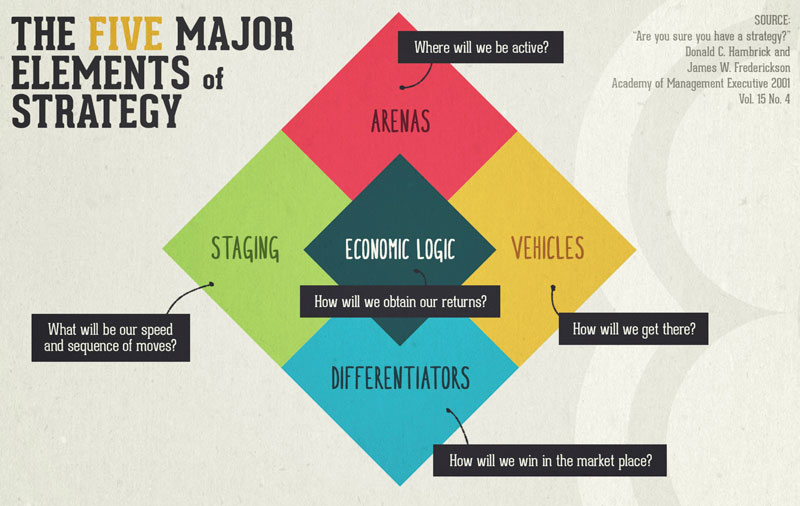We hear a lot about Digital Strategy, not surprisingly in the modern economy, however it is one thing to have a digital strategy, it is another thing to manage a digital strategy, and to manage it effectively in your business. It is important to not simply follow a digital strategy without a framework for ensuring it stays relevant and you have the data and resources to inform how it is managed.
Whether your strategy was developed in-house or by an outsourced consultant, chances are that you will soon find the implementation of it can become rigid, as the pace of change in your business, your industry, and your market increases, your targets will shift, and what worked before is no longer achieving the results you are seeking.
To enhance the ability of a manager to manage a digital strategy, a framework is required. I prefer the 5 Part Strategic Framework of Hambrick & Frederickson (‘Are you sure you have a strategy?’, 2005) as it encourages the practice of asking questions within each strategic element, that causes you to address the current environment. This process is vital to ensure your digital strategy remains dynamic in its implementation, responsive to the changing environment, and ahead of the pack, while your competitors plug away with static plans.
The five elements and the questions they raise are as follows:
1. Arenas: Where will be active?
The thought here should be given to looking at the markets you are currently in, both in your distribution & your marketing, deciding if it is the right one, are there additional or alternative markets that you should be focussing on.
2. Vehicles: How will we get there?
Look at how you are reaching this market, is it the right way for the time, are there easier routes to market, or tools to enhance your marketing reach.
3. Differentiation: how will we win the marketplace?
How can you take a competitive advantage in your product offering or market strategy & message? What are your competitors doing, can you do better by being unique.
4. Staging: what will be our speed & sequence of moves?
Decide what resources & assets you have available, are they the most effective means to your strategic end? Are there technologies that can enhance this route? Is there a need to recalibrate your current systems, processes, and tools?
5. Economic logic: how will we obtain our returns?
The key here is measurement, you need to constantly assess whether your actions in reaching your marketing with your communications & your delivery of service is reaping a sufficient return to justify the costs.
I hope this framework helps you in reassessing your current digital strategy (and overall strategy for that matter), if you need any help with programming this framework into your business operation, get in touch and I would be happy to give you a consultation.
(image credit: we could do no better than this visualisation of the 5 elements by kissmetrics.com)




